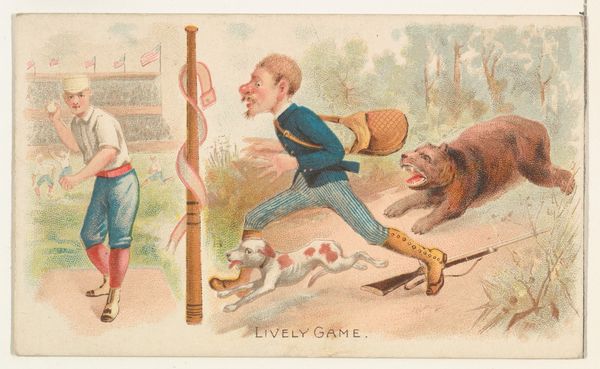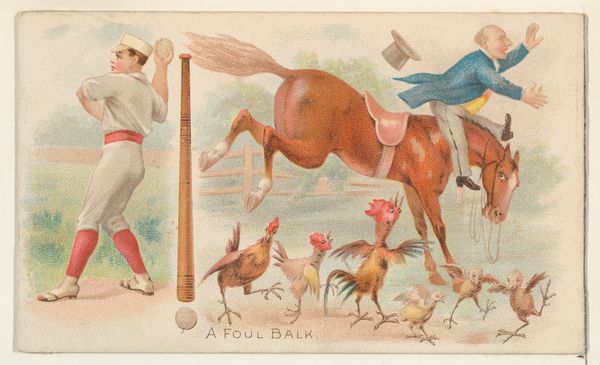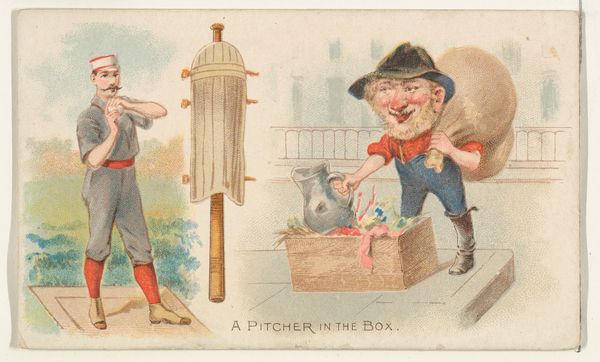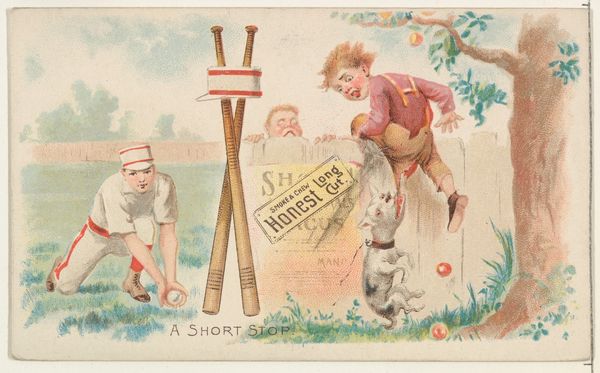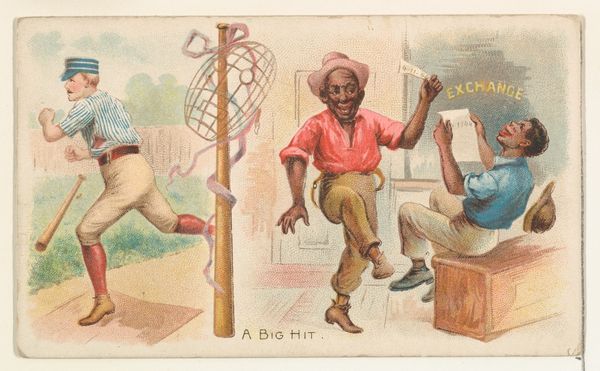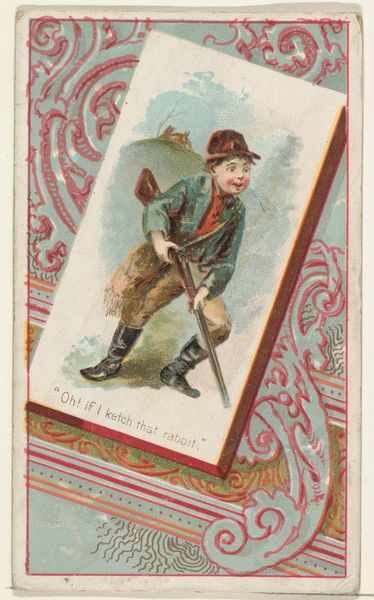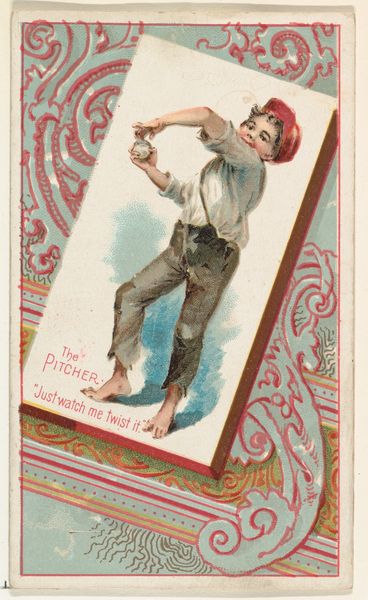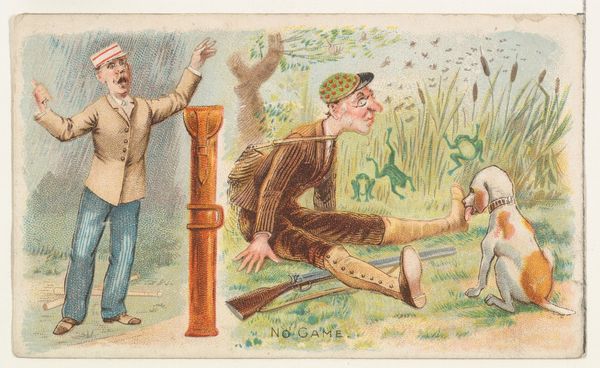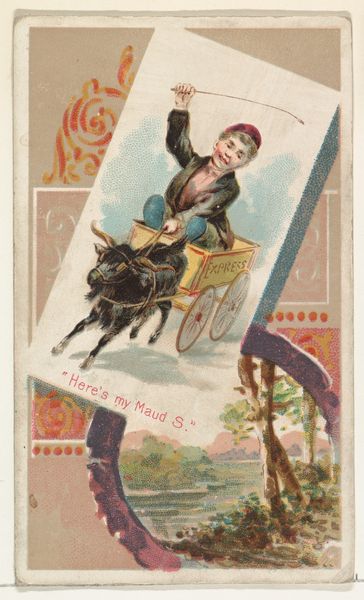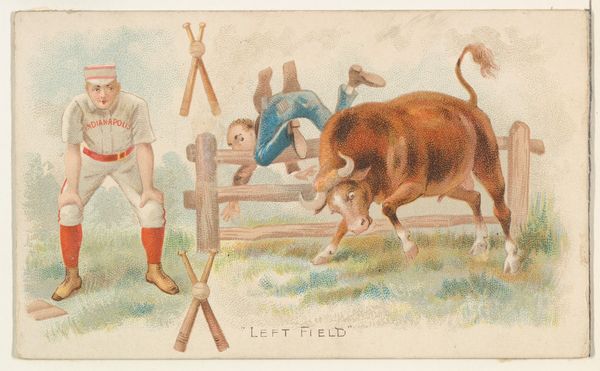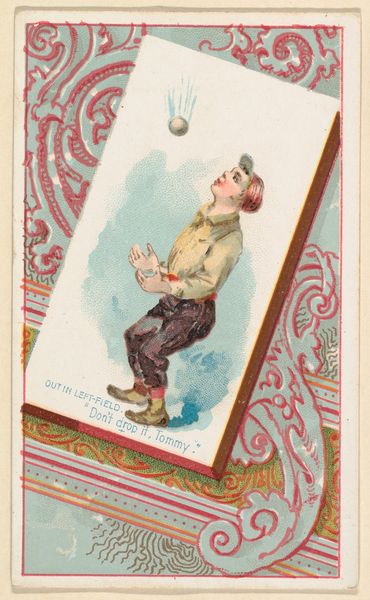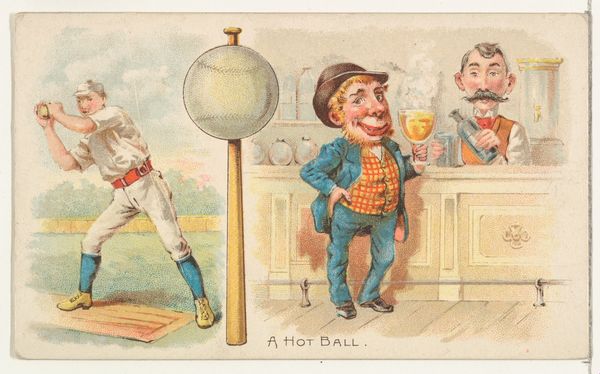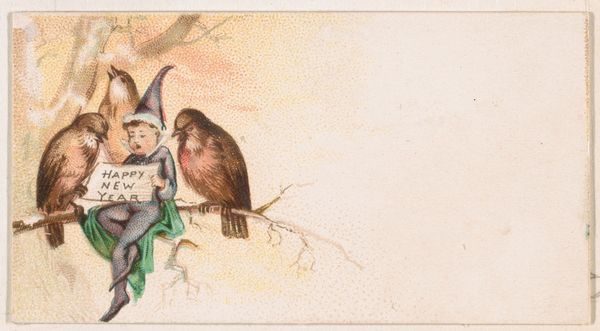
A Foul Catch, from the Talk of the Diamond set (N135) issued by Duke Sons & Co., a branch of the American Tobacco Company 1888
0:00
0:00
Dimensions: Sheet: 2 1/2 × 4 1/8 in. (6.4 × 10.4 cm)
Copyright: Public Domain
Curator: Here we have "A Foul Catch," a print made in 1888 by W. Duke, Sons & Co. as part of their "Talk of the Diamond" baseball card series. Editor: The dynamism here is… intense. The distorted proportions and exaggerated expressions—not to mention the racial caricature—it all feels unsettling. Curator: Observe the stark contrast between the poised baseball player and the figure entangled in the fence. Notice how the artist employs diagonals to create a sense of frantic movement and chaos in contrast to the stable triangular pose of the batter. Editor: The "chaos" here isn’t just aesthetic, it’s ideological. This card exemplifies the racist depictions of Black Americans pervasive during this period. The exaggerated features and comical misfortune reinforce harmful stereotypes that sought to dehumanize. Baseball was becoming increasingly integrated then, but popular culture simultaneously perpetuated discriminatory images. Curator: Looking past the offensive imagery for a moment, the print’s formal composition reflects the popular styles of the era. It shows a caricature style influenced by ukiyo-e Japanese woodblock prints, blended with an academic painting style evident in the figures' gestures and poses. Semiotically, we could say the glove represents lost tradition, juxtaposed with the contemporary figure. Editor: To "look past" this imagery normalizes that racist representations and erases its real harm! Even examining it, it is very crucial to not to treat it like any regular image but recognize that the work has immense symbolic power to harm groups. The way that the catcher and the baseball equipment become the “subject” of this piece undermines the caricature as the primary mode for the distribution of stereotypes. We have to examine it but to give way for justice. Curator: I see your point. Still, ignoring the design entirely prevents a holistic reading of late 19th-century American printmaking traditions. Its bright coloring shows off new printing technologies used at that time in commercial art production, in this case used for highly discriminatory effects. Editor: Exactly. Appreciating formal composition requires we understand what's at stake when these formal decisions promote marginalization. Only through awareness can we learn to unpack images of the past with the necessary caution. I will reflect deeper on your formal approach too. Curator: Agreed. Looking carefully while staying informed allows a richer appreciation of visuality overall.
Comments
No comments
Be the first to comment and join the conversation on the ultimate creative platform.
